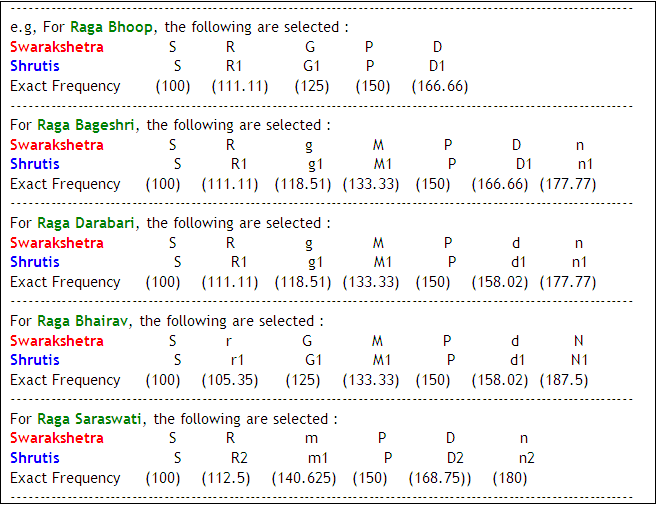Unfortunately, the word 'Swara' carrIES 2 different meanings!
1) Swaras (in a 'Saptak') : These are 12 different (7 Shuddha and 5 Vikrut) types of musical notes identifiable by a musical ear in a Saptak (Octave). The 10 of these (excluding the Shadja and Panchama) actually have a 'Range' or a 'Group' of individual frequencies, which are all identified as the 'same' Swara ! This range therefore should have been called as 'Swarakshetra', (meaning frequency range for a Musical Note) and not Swaras.
2) Swaras (in a Raga) : These are precise single frequencies within a Swarakshetra which make Aroha and Avaroha of a Raga. These should be called as (real) 'Swaras'.
Thus, 'Swara' and 'Swarakshetra' are different. 'Swara' is a chosen (single) frequency within a 'Swarakshetra' (frequency range).
Now, what is the difference between Nada, Shruti, and Swara ?
There are innumerable musical sounds as individual frequencies or "Nadas" within 2 Shadjas (i.e.,in an Octave or Saptak). In order to create Raga-sangeet, we must be able to "stay" (do Nyasa) on some of them. These selected "Nadas" to be used for "stay (Nyasa)" are called as "Shrutis" and they are 22. (Why are they 22 is explained in Topics 22 and 23). Out of these 22 Shrutis, the ones selected for a particular Raga become themselves, the "Swaras" of that Raga.
Thus,
- All individual frequencies between 2 Shadjas are "Nadas"
- Those Nadas selected for becoming steady (Nyasa) in Ragas are "Shrutis"
- Those Shrutis selected in a Raga are "Swaras"
Raga therefore consists of 'Swaras' connected by 'Nadas' !
The difference between 'Shruti' and 'Swara' is clearly described in ancient music literature.
The word 'Shruti' comes from the ancient Sanskrit saying "Shruyate iti shruti". This means that when a Nada is heard so clearly that it can be 'identified' it is called as a 'Shruti'.
This is possible only if we 'stay' on a Nada (Nyasa) which allows the human ear to recognize it as a specific 'musical' note. In contrast, the Nadas which lie 'in-between Shrutis' are always used to connect Swaras (as in Aalap or Meend). We do 'not' become steady on them, they are individually unidentifiable due to their rendering as a quick movement and called as "Nadas", they are not to be called as "Shrutis".
Pt. Ahobal mentions in Sangeet-Parijat:
"Ahi-kundalavat tatra bhedokti shastra sammatah", meaning, 'Shruti' is like a 'Quiet (coiled) snake' (unused). When the same becomes 'active' (when used in a Raga) it becomes like a 'Moving snake' and is called as 'Swara'. (eg., Raga Bhoop has S, R1, G1, P and D1 as 5 Swaras, and that leaves behind the unused 17 other Shrutis (out of a total of 22).
Further, Pt. Vishwabasu opines that those notes performed by a 'Kana-Sparsha' (or by slight touch) in a Raga, should be called as 'Shruti' and others used boldly (with a Nyasa or by hold) should be called as 'Swaras'. He thus calls all frequencies or 'Nadas as Shrutis', and those selected in a Raga for stay or Nyasa as 'Swaras'.
Since such a clear difference in these terms has not been practiced or used seriously by both students and pandits of Classical music, unnecessary confusion has been created.
Hence, we should simply say that:
Unfortunately, many music students and teachers too, call these additional 'connecting' Nadas also as Shrutis, and therefore carry the wrong understanding that Shrutis are innumerable !
In other words, and very simply, the "Nadas" are all Cricket players, "Shrutis" are those 22 selected in a team, and "Swaras" are those selected for a particular match!

